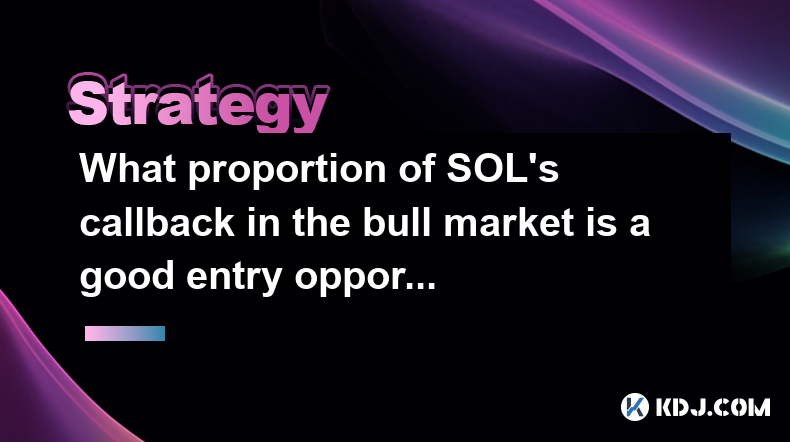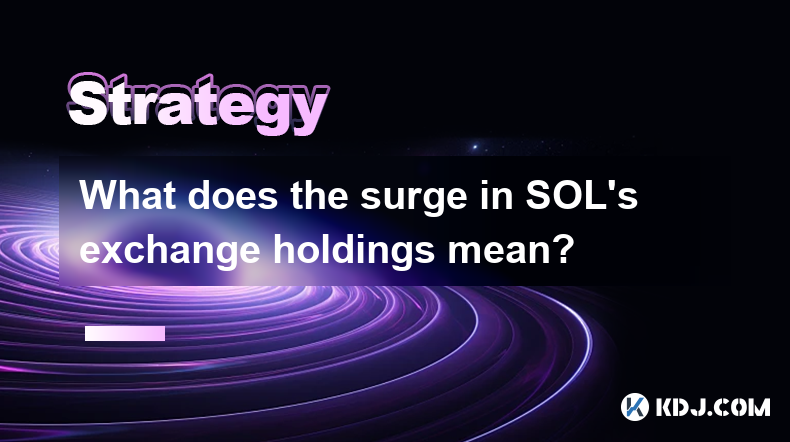-
 Bitcoin
Bitcoin $88,555.6766
1.18% -
 Ethereum
Ethereum $1,626.4043
-1.22% -
 Tether USDt
Tether USDt $0.9998
-0.01% -
 XRP
XRP $2.1018
-1.27% -
 BNB
BNB $605.8750
0.04% -
 Solana
Solana $140.3422
0.04% -
 USDC
USDC $0.9999
0.00% -
 Dogecoin
Dogecoin $0.1643
1.27% -
 TRON
TRON $0.2481
1.05% -
 Cardano
Cardano $0.6359
-1.63% -
 Chainlink
Chainlink $13.3216
-2.53% -
 UNUS SED LEO
UNUS SED LEO $9.1797
-2.79% -
 Avalanche
Avalanche $20.3681
-2.52% -
 Stellar
Stellar $0.2473
-4.43% -
 Sui
Sui $2.3043
2.50% -
 Shiba Inu
Shiba Inu $0.0...01257
-1.15% -
 Toncoin
Toncoin $2.9429
-3.48% -
 Hedera
Hedera $0.1738
0.16% -
 Bitcoin Cash
Bitcoin Cash $347.0587
1.49% -
 Hyperliquid
Hyperliquid $18.2576
-0.35% -
 Litecoin
Litecoin $79.8456
-0.89% -
 Polkadot
Polkadot $3.7809
-4.73% -
 Dai
Dai $0.9999
-0.01% -
 Bitget Token
Bitget Token $4.4439
-0.50% -
 Ethena USDe
Ethena USDe $0.9991
-0.01% -
 Pi
Pi $0.6313
-0.96% -
 Monero
Monero $216.2035
0.57% -
 Pepe
Pepe $0.0...08138
3.46% -
 Uniswap
Uniswap $5.3889
-1.68% -
 OKB
OKB $50.9281
-0.23%
What is the Fibonacci callback line? How to use it?
Fibonacci retracement levels, based on the Fibonacci sequence, pinpoint critical support and resistance zones that indicate potential price reversals or stop-loss and take-profit points.
Feb 25, 2025 at 03:55 pm

Key Points:
- Fibonacci retracement levels are key price points that mark potential areas of support and resistance.
- They are calculated based on the Fibonacci sequence, a series of numbers in which each number is the sum of the two preceding ones.
- The most common Fibonacci retracement levels are 23.6%, 38.2%, 50%, 61.8%, and 78.6%.
- Fibonacci retracement levels can be used to identify potential reversal points in price action.
- They can also be used to set stop-loss and take-profit orders.
What is the Fibonacci retracement line?
The Fibonacci retracement line is a technical analysis tool used to identify potential support and resistance levels in a financial asset's price. It is based on the Fibonacci sequence, a series of numbers in which each number is the sum of the two preceding ones. The most common Fibonacci retracement levels are 23.6%, 38.2%, 50%, 61.8%, and 78.6%.
These levels are calculated by dividing the vertical distance between a high and a low by the Fibonacci ratios. For example, the 38.2% retracement level is calculated by dividing the distance between a high and a low by 0.382.
How to use the Fibonacci retracement line?
The Fibonacci retracement line can be used in a variety of ways to identify potential trading opportunities. One common use is to identify potential reversal points in price action. When a price reaches a Fibonacci retracement level, it may be more likely to reverse direction.
This is because the Fibonacci retracement levels mark key points of support and resistance. If a price reaches a Fibonacci retracement level and fails to break through it, it may be seen as a sign of weakness. Conversely, if a price breaks through a Fibonacci retracement level, it may be seen as a sign of strength.
Another common use of the Fibonacci retracement line is to set stop-loss and take-profit orders. A stop-loss order is an order to sell a financial asset at a certain price if it falls below a certain level. A take-profit order is an order to sell a financial asset at a certain price if it rises above a certain level.
By setting stop-loss and take-profit orders at Fibonacci retracement levels, traders can protect their profits and limit their losses.
FAQs:
What is the Fibonacci sequence?
The Fibonacci sequence is a series of numbers in which each number is the sum of the two preceding ones. The first few numbers in the Fibonacci sequence are 0, 1, 1, 2, 3, 5, 8, 13, 21, 34, 55, and so on.
How are Fibonacci retracement levels calculated?
Fibonacci retracement levels are calculated by dividing the vertical distance between a high and a low by the Fibonacci ratios. The most common Fibonacci retracement levels are 23.6%, 38.2%, 50%, 61.8%, and 78.6%.
What are the most common Fibonacci retracement levels?
The most common Fibonacci retracement levels are 23.6%, 38.2%, 50%, 61.8%, and 78.6%.
How can Fibonacci retracement levels be used in trading?
Fibonacci retracement levels can be used to identify potential trading opportunities. They can be used to identify potential reversal points in price action, and they can also be used to set stop-loss and take-profit orders.
What are some of the limitations of Fibonacci retracement levels?
Fibonacci retracement levels are not a perfect predictor of future price movements. They should be used in conjunction with other technical analysis tools to make trading decisions.
Disclaimer:info@kdj.com
The information provided is not trading advice. kdj.com does not assume any responsibility for any investments made based on the information provided in this article. Cryptocurrencies are highly volatile and it is highly recommended that you invest with caution after thorough research!
If you believe that the content used on this website infringes your copyright, please contact us immediately (info@kdj.com) and we will delete it promptly.
- U.S. Digital Asset Firms Are Reportedly Considering Applying for Bank Charters and Licenses
- 2025-04-22 15:40:12
- OM Slides Deeper as Massive Token Burn Falls Flat
- 2025-04-22 15:40:12
- Ethereum Crashes, Its Share of the Overall Virtual Asset Market Fell Below 7%
- 2025-04-22 15:35:12
- Dogecoin Community Celebrates Dogeday 4/20, Buoyed by ETF Filing Buzz
- 2025-04-22 15:35:12
- ZetaChain Integrates Arbitrum to Offer Streamlined Universal App Usage
- 2025-04-22 15:30:12
- Deutsche Bank and Standard Chartered Are Expanding Their Crypto Operations in the United States
- 2025-04-22 15:30:12
Related knowledge

How to use trading volume to determine the buying and selling timing of BCH?
Apr 22,2025 at 04:14pm
Trading volume is a critical indicator that traders use to gauge the strength and direction of market trends, and it can be particularly useful when determining the buying and selling timing of Bitcoin Cash (BCH). By analyzing the trading volume, investors can gain insights into the market sentiment and make more informed decisions about when to enter o...

What proportion of SOL's callback in the bull market is a good entry opportunity?
Apr 22,2025 at 03:43pm
The question of what proportion of SOL's callback in a bull market represents a good entry opportunity is a nuanced one, requiring a deep dive into market dynamics, historical data, and risk management strategies. Let's explore this topic in detail. Understanding SOL and Bull MarketsSolana (SOL) is a high-performance blockchain platform known for its fa...

Can BCH's Willy indicator be bottomed out in the oversold area?
Apr 22,2025 at 02:56pm
Understanding the Willy IndicatorThe Willy indicator, also known as the Willy ratio, is a technical analysis tool used in the cryptocurrency market to assess the potential for a price reversal. It is calculated by dividing the current price of a cryptocurrency by its 200-day moving average. When the Willy indicator falls into the oversold area, it sugge...

What does the surge in SOL's exchange holdings mean?
Apr 22,2025 at 04:07pm
The recent surge in SOL's exchange holdings has sparked considerable interest and debate within the cryptocurrency community. SOL, the native token of the Solana blockchain, has seen a notable increase in the amount of tokens held on various cryptocurrency exchanges. This phenomenon can have several implications for the token's price, market sentiment, ...

What to do if SHIB's HODL wave indicator shows loose chips?
Apr 21,2025 at 03:07pm
If the SHIB's HODL wave indicator shows loose chips, it suggests that a significant portion of the SHIB holders are selling their tokens, potentially leading to increased volatility and a possible price drop. Understanding how to navigate this situation is crucial for any SHIB investor. This article will guide you through the steps to take when you noti...

Is it a risk that SHIB's derivatives position is 3 times that of the spot?
Apr 20,2025 at 12:35am
Is it a risk that SHIB's derivatives position is 3 times that of the spot? The cryptocurrency market is known for its volatility and high-risk nature, and Shiba Inu (SHIB) is no exception. One of the metrics that traders and investors closely monitor is the ratio of derivatives to spot positions. SHIB's derivatives position being three times that of the...

How to use trading volume to determine the buying and selling timing of BCH?
Apr 22,2025 at 04:14pm
Trading volume is a critical indicator that traders use to gauge the strength and direction of market trends, and it can be particularly useful when determining the buying and selling timing of Bitcoin Cash (BCH). By analyzing the trading volume, investors can gain insights into the market sentiment and make more informed decisions about when to enter o...

What proportion of SOL's callback in the bull market is a good entry opportunity?
Apr 22,2025 at 03:43pm
The question of what proportion of SOL's callback in a bull market represents a good entry opportunity is a nuanced one, requiring a deep dive into market dynamics, historical data, and risk management strategies. Let's explore this topic in detail. Understanding SOL and Bull MarketsSolana (SOL) is a high-performance blockchain platform known for its fa...

Can BCH's Willy indicator be bottomed out in the oversold area?
Apr 22,2025 at 02:56pm
Understanding the Willy IndicatorThe Willy indicator, also known as the Willy ratio, is a technical analysis tool used in the cryptocurrency market to assess the potential for a price reversal. It is calculated by dividing the current price of a cryptocurrency by its 200-day moving average. When the Willy indicator falls into the oversold area, it sugge...

What does the surge in SOL's exchange holdings mean?
Apr 22,2025 at 04:07pm
The recent surge in SOL's exchange holdings has sparked considerable interest and debate within the cryptocurrency community. SOL, the native token of the Solana blockchain, has seen a notable increase in the amount of tokens held on various cryptocurrency exchanges. This phenomenon can have several implications for the token's price, market sentiment, ...

What to do if SHIB's HODL wave indicator shows loose chips?
Apr 21,2025 at 03:07pm
If the SHIB's HODL wave indicator shows loose chips, it suggests that a significant portion of the SHIB holders are selling their tokens, potentially leading to increased volatility and a possible price drop. Understanding how to navigate this situation is crucial for any SHIB investor. This article will guide you through the steps to take when you noti...

Is it a risk that SHIB's derivatives position is 3 times that of the spot?
Apr 20,2025 at 12:35am
Is it a risk that SHIB's derivatives position is 3 times that of the spot? The cryptocurrency market is known for its volatility and high-risk nature, and Shiba Inu (SHIB) is no exception. One of the metrics that traders and investors closely monitor is the ratio of derivatives to spot positions. SHIB's derivatives position being three times that of the...
See all articles























































































